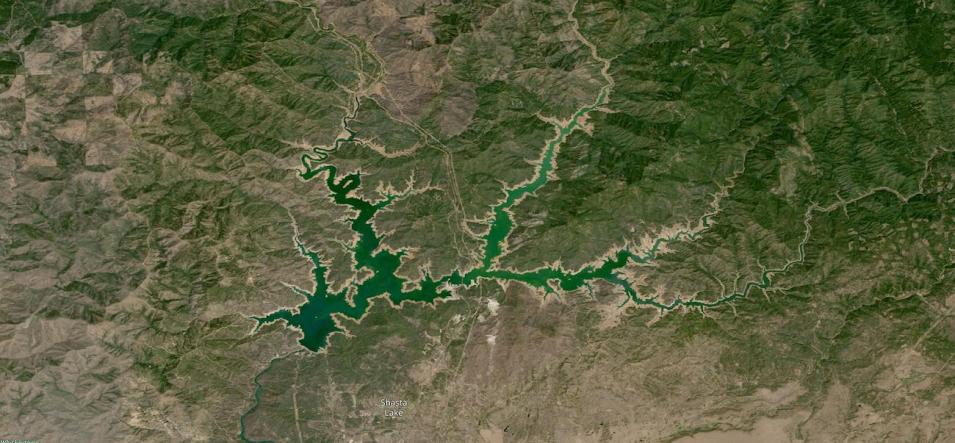This true color/natural color corrected reflectance image of Shasta Lake in California shows exposed shorelines due to lower water capacity within the reservoir. The image was acquired on August 14, 2022 by the Operational Land Imager-2 (OLI-2) instrument aboard the joint NASA/USGS Landsat 9 satellite (OLI-2 is similar to the OLI aboard Landsat 8, but has a higher radiometric resolution).
According to the Los Angeles Times, the reservoir is at 38% capacity and is the driest it has been at this time of year since water level records began in 1976. The reservoir is part of the federal Central Valley Project, which supplies water mostly to the San Joaquin Valley and portions of the San Francisco Bay Area.
The imagery available in NASA's Worldview is part of the Harmonized Landsat Sentinel-2 (HLS) project, which provides 30 meter resolution true-color surface reflectance imagery from the OLI and OLI-2 instruments aboard the Landsat 8 and Landsat 9 satellites and the Multi-Spectral Instrument (MSI) aboard the ESA (European Space Agency) Sentinel-2A and -2B satellites.
The data from the three instruments aboard the four satellites are processed through a set of algorithms to make the imagery consistent and comparable across the instruments. This includes atmospheric correction, cloud and cloud-shadow masking, spatial co-registration and common gridding, illumination and view angle normalization, and spectral bandpass adjustment.
Visit Worldview to visualize near real-time imagery from NASA's EOSDIS, and check out more Worldview weekly images in our archive.
Dataset: doi:10.5067/HLS/HLSS30.002
References: Chun, Myung J. (July 22, 2022). Shasta Lake at 38% capacity heading into the hottest months of the year. Los Angeles Times.
